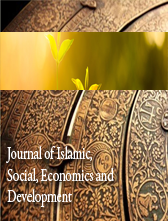VISUAL DA’WAH APPROACH: STUDY OF DESIGN PRINCIPLES THROUGH VISUAL TREND IN SOCIAL MEDIA (FACEBOOK)
Abstract
Previous study on visual in da’wah consist of; comics, magazines, novels, TV series (Cinetron) and shadow puppet (Wayang Kulit). The approach denoted as engaging and alternate medium in delivering da’wah. Today, social media i.e Facebook has becoming an open arena and a target platform in the effort to vary the medium. The used of visual are seen as relatively inventive and an influential way that are continuously substantial. This article is looking into more than 300 visual da’wah posted in designated Facebook pages in a duration of three months. Visual da’wah are analyze through gestalt visual perception ; and identified through systematic coding and validated as a measuring factor of aesthetics in visuals. The analysis on aesthetics features of visual perception law ; The Law of Similarity,The Law of Direction (or ‘the law of continuity or ‘good continuation’, The Law of Closure, Figure and Ground,The Law of Inclusiveness, The Law of Symmetry and The Law of Prägnanzstufen suggesting a significant and influence of the law that is vital to establish in delivery specific da’wah content that match with the application of the law. This study suggested that Gestalt application fundamentally aid to highlight on da’wah text that can ensure clarity aspect in aesthetics visual da’wah approach However, the application of gestalt law are presume not to be study independently. Other substantial finding about this study are da’wah experiences that outlines constructive response that relate to muslim’s belief that may contribute to future da’wah approach through other social media application.













